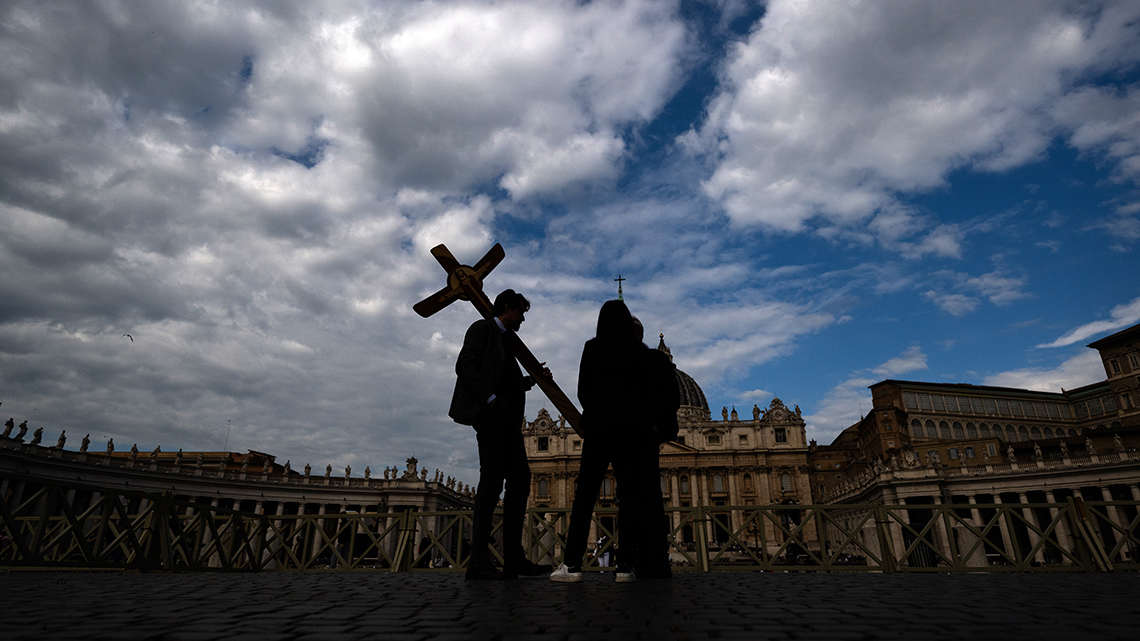The following reflection is by Fleur Dorrell, Biblical Apostolate Manager for the Catholic Bishops' Conference of England and Wales in partnership with the Bible Society.

All the Scripture readings on the Feast of the Exaltation of the Cross draw on powerful images of
being ‘lifted up’. In John’s gospel, Jesus says, ‘as Moses lifted up the serpent in the wilderness, so
must the Son of Man be lifted up, that whoever believes in him may have eternal life.’
John 3:14-15.
He is referring to an incident in Numbers 21:4-9 when the Israelites hurried towards the Red Sea.
They had complained against God, had been punished by an infestation of snakes and some had
died. God instructed Moses to raise up a bronze snake in the wilderness and all those who turned to
it were healed and saved. It became a visual and prophetic symbol of Jesus’ crucifixion. When Jesus
was lifted high on a cross, he would offer universal salvation and eternal life through his death.
In Philippians 2:4-11, the apostle Paul describes Jesus as being ‘highly exalted’ by God after his
humiliation and execution on the cross. Jesus’ subsequent exaltation at the right hand of the Father
and his nomination with the name above all names as ‘Christ and Lord’ is one of the earliest
references to his divinity. It is all the more remarkable in suggesting that God chose to become
human, entered into the world and experienced death – transforming it as a place where divinity
and hope can be met. The lifting up of Jesus in resurrection and ascension then becomes the fruit of
so great a self-emptying love. Death is no longer the end but a transition into the divine life.
The Letter to the Philippians is an early fragment of a Christian hymn in one of the earliest Christian
texts. It tells us that Jesus emptied himself out of humility, even to death on a cross. This Letter
takes us into the heart of the Gospel and the pattern of Jesus’ life and ministry. It offers a
permanent challenge to all forms of self-assertion and personal power-seeking in every age.
The ways we celebrate this Feast Day shows our reverence for Jesus:
As we enter the Church, we are reminded of how Christ received and accepted us in baptism in our
gestures of signing ourselves with his cross and holy water.
By bowing at Jesus’ holy name, crossing our forehead, lips and heart as we wait to hear his Gospel,
we invite his words and life to become our words and life.
Kneeling as Christ comes among us in the sacrament of his presence and reverently receiving him
into our body at Communion, we become one with him.
Every time Christ’s life is raised up for all to look to him, we pray that he will be seen, and our world
will be healed. May we be witnesses to this truth in our daily faith and actions.
Questions for further exploration:
How are we lifted up in our schools?
Who lifts us up and who can we lift up?
How can we serve God by lifting up his name this week?
Where else is Jesus being lifted up at home and in our communities?
Can we recognise the signs of these and give thanks for God’s glory in this world?
Let us lift each other up in confident faith. That we know who the Son of Man is and we know that
through him we have eternal life.
Suggested music for listening to or singing:
On Eagle’s Wings, by Michael Joncas, 1977.
If you’d like to know more about our national God who Speaks initiative and to share ideas,
activities and resources on the Scriptures, go to: Godwhospeaks.uk